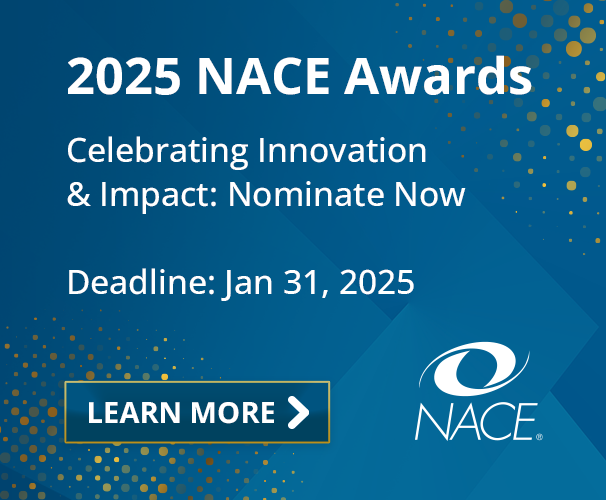Spotlight for Career Services Professionals
Part of the mission of Great Lakes Higher Education Corporation & Affiliates is to help close the college completion gap between low-income students, students of color, and first-generation students and all other students.
“We recognized that many students from low-income backgrounds don't have the opportunity to take unpaid internships that their wealthier peers have during college because they have to work to earn a paycheck,” says Amy Kerwin, Great Lakes’ vice president of community investments.
Kerwin says the need to work puts low-income students behind other students not only during college, but also when competing for jobs and when becoming new employees.
“They are not equal in terms of workplace experience,” Kerwin says. “We want to level that playing field so all students—regardless of income—have an opportunity to participate in an internship that’s related to their major while they're in college.”
Through its Career Ready Internship Grant program, Great Lakes is awarding $2.1 million in grants to 16 community colleges in Wisconsin, North Dakota, Arkansas, Iowa, Minnesota, and Ohio.
“Based on our prior experience with students at four-year colleges, we decided to open up the grant program to community colleges as well,” Kerwin says.
One of the grant recipients is National Park College, located in Arkansas’ Hot Springs National Park. More than 70 percent of the college’s 2,600 credit-earning students receive financial aid.
Mary Kay Wurm, director of career services and service learning, explains that National Park College applied for a Career Ready Internship Grant because “paid internships tend to lead to job offers, while unpaid internships usually do not.”
“Some of the unpaid internships may be for nonprofit or government agencies, which may account for the low employment offers,” Wurm says. “We are a rural area and students need paid internships to help with time and transportation to and from the internship site. Many of our students are nontraditional students and it is a hardship on them to do an unpaid internship when they could be working part time instead.”
One of the requirements of the grant is that the internships could not be on campus; they have to be off campus with either a for-profit or nonprofit business.
“As we were selecting grantees, we provided more points in our scoring process to those colleges that were creating internships with new companies or creating additional internships with companies with which the college already worked,” Kerwin says. “We didn't want to fund something that already existed. We also wanted to encourage more engagement with the business community.”
Great Lakes also stipulated that the funding can be used for transportation.
“For some students, being offered an internship opportunity is great, but if they don't have the funds to get to and from the workplace, they can’t accept it,” Kerwin points out. “We didn't want a lack of transportation to be a barrier to having an internship.”
In the past, National Park College has been unable to provide many paid internships to its students because of limited resources. Most of the internships the college provided were paid internships where students were satisfying a degree requirement and the employer compensated the student.
For example, during the 2014-15 academic year, of the 35 internships that the college provided, 90 percent were paid and 10 percent were unpaid.
Through its partnership with Great Lakes, National Park College will more than double the number of internships that it offers to its students.
The Career Ready Internship Grant provides two years of funding. During that time, National Park College has established the goal of creating 84 student internships with at least 40 employers.
The grant funds are paid in three installments to National Park College from January 2, 2017, through May 31, 2018. The college’s business office will dispense the funds to students participating in the internship program.
Ninety-eight percent of the total grant funds of $174,816 are used to pay the student interns, while 2 percent are used for program administration.
Students from degree programs within the college’s business, allied health, arts and sciences, and technical and professional divisions are eligible to participate in the program. Students who are selected to participate in the program and placed in a worksite can work up to 170 hours during the semester earning $12 per hour.
“These internships will help to increase student graduation and job placement rates,” Wurm says. “National Park College will work to establish new internships in programs that currently do not include an internship course and will work toward making the paid internship program sustainable after the grant period ends.”
Throughout the duration of the Career Ready Internship Grant program, Great Lakes will examine the unique needs of the participating two-year colleges as they work closely with local employers to establish 1,000 paid internships.
“Our hope,” Kerwin says, “is that through this grant cycle, we can learn how to help other two-year colleges build a self-sustaining paid internship program and share that roadmap broadly with others.”




